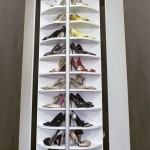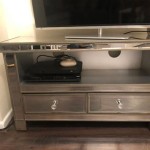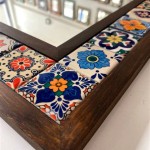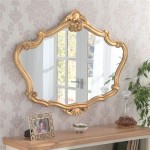How To Place 3 Circle Mirrors On A Wall: A Comprehensive Guide
Strategically placing mirrors within a living space can significantly enhance its aesthetic appeal and functionality. Mirrors amplify natural light, create the illusion of spaciousness, and serve as decorative focal points. Utilizing a set of three circular mirrors presents unique opportunities for design and arrangement. This article provides a detailed guide on how to effectively place three circle mirrors on a wall, considering various factors such as wall size, room style, lighting conditions, and practical considerations.
Determining Optimal Placement and Layout
The initial stage of mirror placement involves assessing the available space and deciding on the most suitable layout. Several factors influence this decision, including the size of the wall, the existing decor, and the desired visual effect. Pre-planning is crucial to ensure a cohesive and balanced aesthetic.
Consider the overall dimensions of the wall where the mirrors will be installed. A large, expansive wall can accommodate a wider arrangement, possibly a horizontal or vertical line, or a staggered pattern. Conversely, a smaller wall may necessitate a more compact configuration, such as a triangular or closely grouped cluster. Accurately measuring the wall space allows for precise planning and prevents overcrowding or an unbalanced appearance.
Analyze the existing decor and architectural features of the room. The mirrors should complement the existing style and enhance the overall aesthetic. In a modern, minimalist setting, a clean, geometric arrangement of the mirrors might be appropriate. In a more traditional setting, a more ornate or layered arrangement could be considered. Take note of any existing artwork, furniture, or architectural details that could influence the placement of the mirrors. For example, aligning the mirrors with a specific piece of furniture or artwork can create a sense of visual harmony.
The intended visual effect plays a significant role in determining the layout. Mirrors can be used to create various illusions, such as expanding the perceived size of a room or drawing attention to a specific focal point. If the goal is to make a room appear larger, placing the mirrors in a way that reflects natural light deep into the room is recommended. If the goal is to highlight a particular area or piece of furniture, positioning the mirrors to reflect that area directly can be effective. Experimenting with different layouts on the floor before installation can help visualize the final result and avoid costly mistakes.
Consider the function of the room when determining placement. In a hallway, mirrors can be used to brighten the space and create a more welcoming atmosphere. In a bedroom, mirrors can be placed near a dressing area to facilitate grooming routines. In a living room, mirrors can serve as decorative accents, reflecting light and adding visual interest. Understanding the specific purpose of the room will help guide the placement of the mirrors to maximize their functionality and aesthetic impact.
Spacing is critical to a balanced arrangement. Ensure that the mirrors are properly spaced from each other and from the edges of the wall. Uneven spacing can disrupt the visual balance and create an unsettling effect. Use a measuring tape and level to ensure consistent and accurate spacing. A general guideline is to maintain a consistent gap between the mirrors, typically ranging from 2 to 6 inches, depending on the size of the mirrors and the overall dimensions of the wall.
Ensuring Secure and Accurate Installation
Once the placement and layout have been determined, the next critical step is to ensure secure and accurate installation. Improper installation can lead to damage to the mirrors, the wall, or, in the worst-case scenario, personal injury. Proper preparation and the use of appropriate tools are essential for a successful installation.
Before beginning the installation process, gather all the necessary tools and materials. This typically includes a measuring tape, a level, a pencil, a drill (if necessary), appropriate wall anchors, screws or hanging hardware, and safety glasses. The specific type of wall anchors and hanging hardware will depend on the weight of the mirrors and the type of wall (drywall, plaster, wood, etc.). Selecting the correct hardware is crucial for ensuring a secure and long-lasting installation.
Accurately mark the desired location of each mirror on the wall using a measuring tape, level, and pencil. Precisely measure and mark the desired height and spacing of each mirror. Start with the central mirror, if applicable, and then work outwards to ensure a balanced arrangement. Use a level to ensure that the marks are perfectly horizontal or vertical, depending on the intended orientation. Double-checking the measurements and markings before proceeding is essential to prevent errors.
Drilling pilot holes, if necessary, is a critical step in preparing the wall for the mounting hardware. Use a drill bit that is slightly smaller than the diameter of the screws or anchors being used. Drill the pilot holes at the marked locations, being careful to drill straight into the wall. If drilling into drywall, use appropriate drywall anchors to provide additional support. If drilling into wood, ensure that the screws are long enough to penetrate the wood securely.
Attach the mounting hardware to the mirrors according to the manufacturer's instructions. This may involve attaching hooks, D-rings, or other types of hanging mechanisms to the back of the mirrors. Ensure that the hardware is securely attached and that the mirrors are properly balanced. If using adhesive strips, carefully clean the back of the mirrors and the wall surface before applying the adhesive. Follow the manufacturer's instructions for applying the adhesive and allowing it to cure properly.
Hang the mirrors on the wall, carefully aligning them with the pre-drilled pilot holes or the marked locations. Ensure that the mirrors are securely attached to the wall and that they are level. Use a level to make any necessary adjustments to ensure a perfectly aligned arrangement. If using screws, tighten them gradually, being careful not to overtighten them and damage the wall or the mirrors. Once the mirrors are securely hung, inspect them carefully to ensure that they are stable and properly aligned.
Considering Style, Lighting, and Room Function
Beyond placement and secure installation, effectively integrating the circle mirrors requires careful consideration of the room's style, lighting conditions, and intended function. These elements contribute significantly to the overall impact of the mirror arrangement.
The style of the room should inform the choice of mirror frames and the arrangement itself. A minimalist room benefits from simple, frameless mirrors arranged in a geometric pattern. This maintains the clean lines and uncluttered aesthetic. A bohemian or eclectic room might accommodate mirrors with more ornate frames or an asymmetrical arrangement, adding to the layered and personalized feel. A traditional room could incorporate mirrors with classic frames in a symmetrical arrangement, reflecting a sense of order and elegance. Consider the existing color palette and materials in the room when selecting the mirror frames to ensure a cohesive look.
Lighting plays a crucial role in how the mirrors reflect and enhance the space. The angle and intensity of natural and artificial light sources should be carefully considered when determining the placement of the mirrors. Placing mirrors opposite a window allows them to reflect natural light deep into the room, brightening the space and creating a more open atmosphere. Strategically positioning mirrors near lamps or other light fixtures can amplify the artificial light, making the room feel warmer and more inviting. Avoid placing mirrors in locations where they will reflect harsh or direct sunlight, as this can create glare and discomfort.
The mirrors' purpose within the room dictates their optimal placement and arrangement. In a hallway, mirrors can be placed to create the illusion of a wider space and to provide a quick visual check before leaving the house. In a bedroom, mirrors can be positioned near a dressing table or wardrobe to facilitate grooming and outfit selection. In a living room, mirrors can serve as decorative accents, reflecting artwork, plants, or other decorative elements. By considering the specific function of the room and how the mirrors will be used, a more practical and visually appealing arrangement can be achieved.
Consider the viewing angles and the reflections that the mirrors will create. Avoid placing mirrors in locations where they will reflect undesirable views, such as a cluttered corner or an unsightly object. Instead, position the mirrors to reflect aesthetically pleasing elements, such as artwork, plants, or a panoramic view. The reflections should enhance the overall ambiance of the room and create a sense of visual interest. Experiment with different viewing angles and reflections to find the most flattering and visually appealing arrangement.
Scale and proportion are important considerations when integrating the mirrors into the overall design of the room. The size of the mirrors should be proportionate to the size of the wall and the surrounding furniture. Oversized mirrors can overwhelm a small space, while undersized mirrors can get lost in a large room. Similarly, the spacing between the mirrors should be proportionate to their size. A general guideline is to maintain a balanced and harmonious relationship between the mirrors and the other elements in the room.
Accessorizing around the mirrors can further enhance their impact and create a more cohesive design. Consider adding artwork, plants, or decorative objects near the mirrors to complement their style and create a sense of visual interest. The accessories should be carefully selected to enhance the overall aesthetic of the room and to avoid cluttering the space. A well-chosen selection of accessories can transform the mirror arrangement from a simple decorative element into a focal point of the room.

24 99 Mirror Wall Decor Bedroom

Modern Set Of 3 Round Mirror Luxury Triple Wall Entryway Unique Hanging Mirrors Decor

Wonderful Creative Entryways With Mirrors Porthole Mirror Gold Wall Decor

Set Of 3 Frameless Circle Wall Mirrors

Sunray Set Of 3 Gold Round Mirror Decorative Wall Art Circle Vintage Sunburst Decor For Living Room Bathroom Hallway Bedroom

10 Simple Ways To Decorate Around A Round Mirror Wikihow

Manor Park Modern Metal Round Wall Mirrors Set Of 3 Com Mirror Decor Rustic

Set Of 3 Round Silver Wall Mounted Mirrors

3 In 1 Wall Round Mirrors Unique House Collection Quality Home Essentials

Homcom Set Of 3 Wood Wall Mirror Home Modern Round For In Living Room Bedroom Natural Aosom Com








